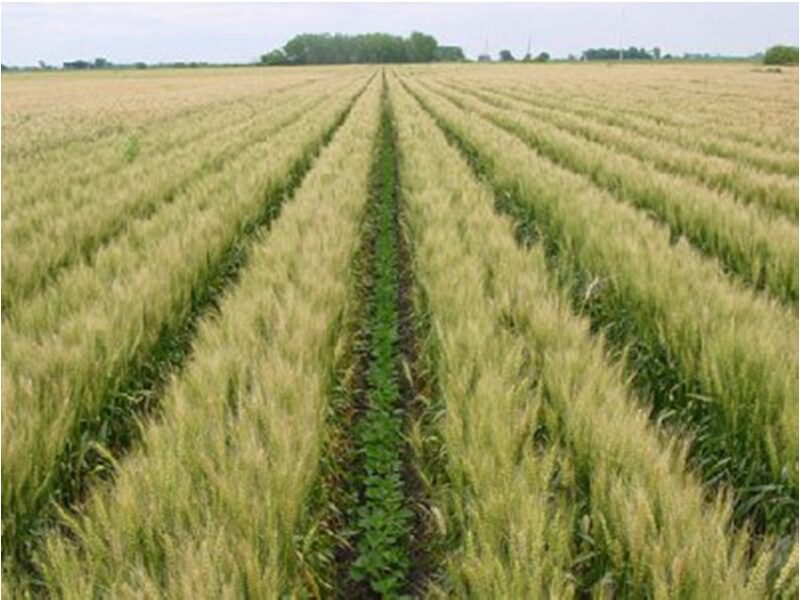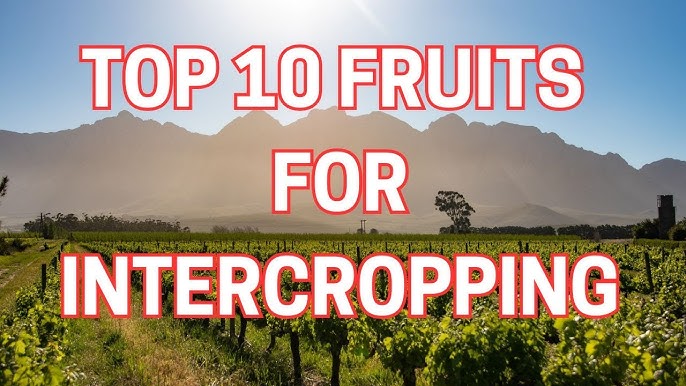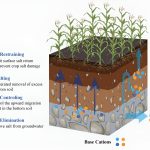Are you tired of seeing your crops struggle and your land not reaching its full potential? Imagine a thriving garden or farm where every inch of soil is working hard to give you the best possible yield.
You don’t need more land; you just need the right techniques. Intercropping is the secret weapon to transform your agricultural efforts and boost productivity. By strategically growing multiple crops together, you can maximize your output without expanding your space. You’ll discover the top intercropping techniques that will revolutionize your farming practices, enhance your soil health, and multiply your harvest.
Get ready to unlock the secrets of nature and take your agricultural game to the next level. Dive in to learn how you can make the most of your land, your resources, and your time.
Benefits Of Intercropping
Intercropping boosts soil health and increases crop yield by using space efficiently. This technique reduces pests, enhances biodiversity, and promotes nutrient cycling.
Intercropping is a farming technique that involves growing two or more crops together on the same piece of land. This age-old practice offers numerous benefits that can significantly enhance agricultural productivity. By combining different plants, you can maximize the use of resources, improve soil health, and increase biodiversity. Let’s dive into the specific benefits of intercropping and explore how you can apply them to maximize yield on your farm.Improved Soil Health
Intercropping can enhance soil health by preventing erosion and maintaining a balanced nutrient profile. Different crops have varying root structures that help hold the soil together and keep it fertile. For example, legumes can fix nitrogen in the soil, benefiting neighboring crops like corn or wheat. Have you noticed your soil becoming more nutrient-rich when you plant certain combinations together? This is a direct benefit of intercropping.Efficient Use Of Space
The ability to plant multiple crops in the same area means you can make the most out of limited space. This is especially beneficial for small-scale farmers or those working in urban environments. Think about your backyard garden; intercropping allows you to grow tomatoes alongside basil, saving space and improving yield. What creative crop combinations can you try in your limited space to increase productivity?Pest And Disease Control
Intercropping can naturally reduce pests and diseases, minimizing the need for chemical pesticides. Some plants act as natural repellents, protecting their companions from harmful insects. For example, marigolds can deter nematodes, benefiting crops like potatoes and carrots. Have you tried using certain plants as natural defenders in your garden? This method can cut down costs and promote a healthier ecosystem.Increased Biodiversity
Growing a variety of crops in one area boosts biodiversity, making your farm more resilient to environmental changes. Diverse ecosystems are less prone to the spread of pests and diseases. When you mix crops, you create a balance that supports beneficial insects and wildlife, contributing to a thriving ecosystem. How might increased biodiversity benefit your land and yield?Enhanced Resource Utilization
Intercropping allows for better resource utilization such as sunlight, water, and nutrients. Taller crops can provide shade for smaller plants, reducing water evaporation and conserving soil moisture. Have you seen how intercropping can make efficient use of resources on your farm? This practice not only saves water but also optimizes nutrient use, promoting sustainable farming. By understanding and applying these benefits of intercropping, you can transform your farming practices, enhance productivity, and contribute to a healthier environment. What innovative intercropping strategies will you explore to maximize your yield? Your farm’s potential is waiting.
Popular Intercropping Methods
Farmers often use popular intercropping methods to boost crop production. These techniques, like strip cropping and relay cropping, mix different plants in the same field. This approach helps in maximizing yield by improving soil health and reducing pests naturally.
Intercropping is a fantastic way to boost your farm’s productivity by growing two or more crops together. This method not only maximizes land use but also enhances biodiversity and soil health. By picking the right combination of crops, you can improve yields and create a more sustainable farming system. Let’s dive into some popular intercropping methods you can try.1. Row Intercropping
Row intercropping involves planting different crops in alternating rows. Imagine having corn and beans side by side; each row complements the other. The beans benefit from the corn’s shade, while the corn gets extra nitrogen from the beans. This method is excellent for optimizing sunlight and improving soil fertility.2. Strip Intercropping
Strip intercropping takes row intercropping a step further by using strips of crops instead of single rows. You might have three strips of wheat, then two strips of clover. This setup minimizes competition for resources and makes harvesting easier. It’s particularly effective for managing pests and weeds naturally.3. Relay Intercropping
In relay intercropping, you plant a second crop during the growth stage of the first crop. As the first crop is maturing, the second one is just getting started. Picture planting barley, then adding peas before the barley is harvested. This method ensures continuous ground cover, reducing erosion and keeping the soil healthy.4. Mixed Intercropping
Mixed intercropping is like a potluck for your fields. You mix different crops in the same area without specific row arrangements. This method can be a bit chaotic but is great for small-scale gardens or plots. It encourages resilience against pests and diseases by increasing plant diversity.5. Temporal Intercropping
Temporal intercropping involves growing crops in different seasons on the same land. You might plant lettuce in early spring and follow with carrots in the summer. This approach maximizes land use throughout the year and prevents soil depletion. It’s an excellent way to maintain a steady supply of crops. Which of these methods do you think would work best for your land? Each technique offers unique benefits, so consider your goals and resources. Experimenting with different combinations can lead to surprising results and a richer farming experience. Remember, the key is to observe and adapt. Your farm is a living system, and intercropping can help you nurture it effectively.Selecting Compatible Crop Combinations
Intercropping offers an excellent way to increase crop yield. Choosing the right crop combinations is crucial for success. Compatible crops help each other grow. This leads to healthier plants and higher yields. Farmers must consider several factors to choose the right crops.
Understanding Plant Needs
Crops have different water, light, and nutrient needs. Understanding these is essential. Some plants need more sunlight than others. Others require more water. Pairing plants with similar needs ensures they grow well together.
Root System Compatibility
Root systems play a vital role in intercropping. Some plants have deep roots. Others have shallow roots. Pairing different root systems helps efficient nutrient use. This also reduces competition for resources.
Growth Habit And Height
Plants grow at different heights and speeds. Tall plants can provide shade. Short plants benefit from this shade. Fast-growing plants can offer protection from pests. Choose plants that complement each other’s growth habits.
Allelopathy And Pest Control
Some plants release chemicals that affect others. This is called allelopathy. Choose plants that do not harm each other. Some plants repel pests naturally. Combining such plants can reduce the need for pesticides.
Harvest Timing
Consider the timing of harvests. Crops that mature at different times can be beneficial. This ensures continuous use of land. It also reduces labor peaks during harvesting.

Maximizing Profit Through Intercropping
Intercropping is a smart farming method. It involves growing different crops together. This technique helps increase yield and profit. Farmers can benefit from diverse crop production. Intercropping reduces risks and boosts soil health. It also improves pest control. Let’s explore how intercropping can maximize profit.
Choosing Complementary Crops
Selecting the right crops is crucial. Some crops grow well together. They share nutrients and space efficiently. Beans and corn are a popular pair. Beans fix nitrogen, benefiting corn. Corn provides support for climbing beans. This symbiotic relationship enhances growth.
Efficient Use Of Resources
Intercropping optimizes resource use. Different crops utilize sunlight, water, and nutrients. This reduces waste and increases productivity. Farmers can plant deep-rooted and shallow-rooted crops together. This ensures efficient nutrient uptake.
Enhanced Pest Management
Diverse crops create a natural pest barrier. Some plants repel insects. Others attract beneficial predators. This reduces the need for chemical pesticides. Natural pest control saves money and protects the environment.
Improved Soil Health
Intercropping boosts soil fertility. Different crops enhance soil structure. They prevent erosion and improve water retention. Legumes, for instance, enrich the soil with nitrogen. Healthy soil leads to better yield and profit.
Market Diversification
Diverse crops offer variety to the market. Farmers can sell different products. This reduces market dependency on a single crop. It also attracts more buyers. Diverse produce can fetch higher prices, maximizing profit.

Conclusion
Intercropping boosts farm productivity and soil health. Farmers enjoy increased yields with strategic crop mixes. It reduces pests naturally, saving money on chemicals. Crop diversity also maintains soil nutrients, vital for growth. Simple methods bring big benefits to small farms.
Testing different combinations helps find what works best locally. Sharing experiences with other farmers enhances learning. Explore these techniques for better harvests and sustainable farming. Embrace intercropping for a rewarding agricultural experience. It’s a step towards efficient and eco-friendly farming practices.
Keep experimenting and stay committed to your farm’s success.



